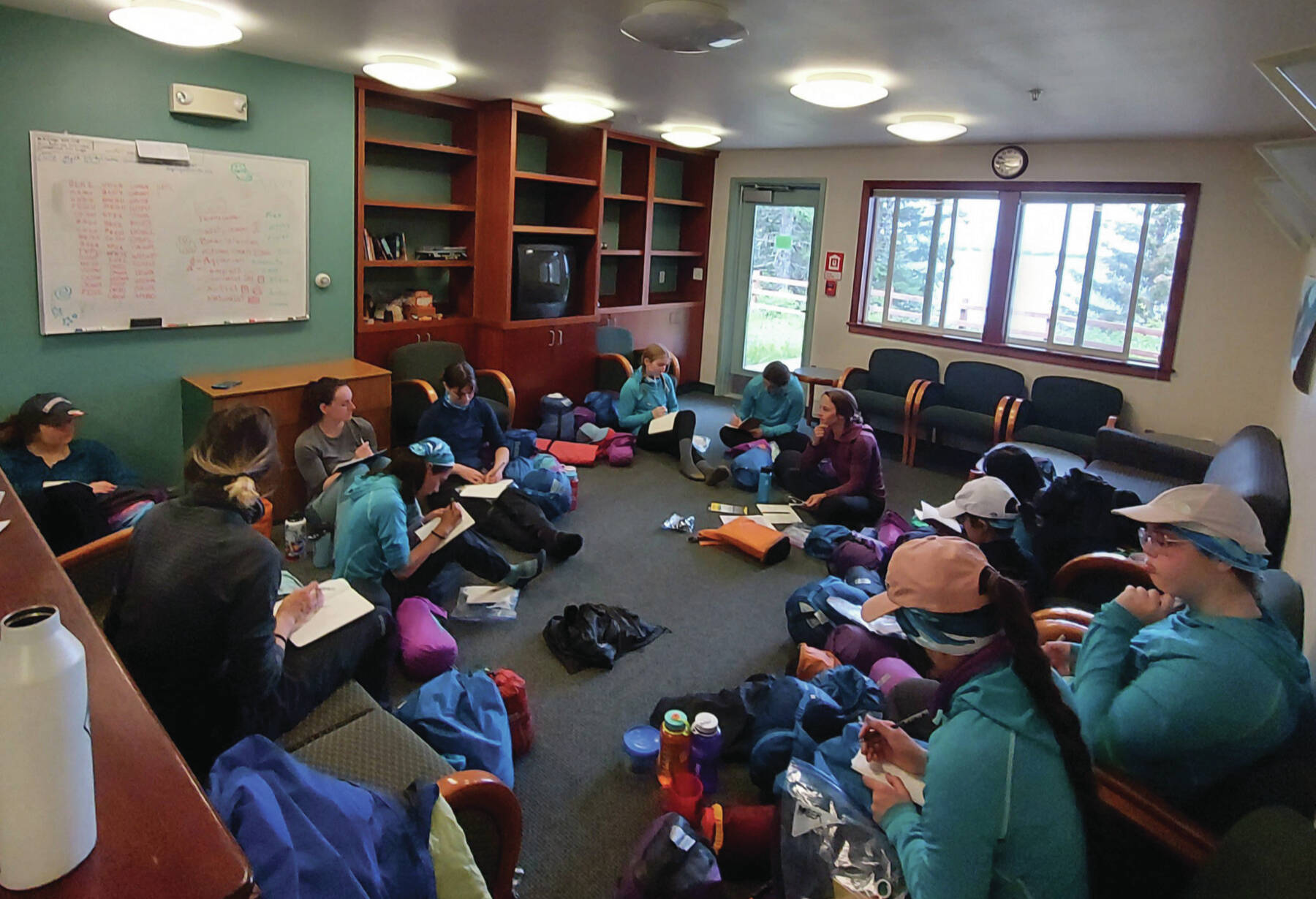The University of Alaska Fairbanks Girls on Water (GOW) program concluded on Monday, July 10 with a series of science presentations from participants at the Kachemak Bay Campus.
Girls on Water is a part of the Inspiring Girls Expeditions in Alaska that started with the Girls on Ice by three UAF glaciology graduate students in the Alaska range. The website for the program, www.inspiringgirls.org/ige-alaska, clearly notes that application to the various programs available “welcomes cisgender girls and transgender, agender, Two Spirit, nonbinary, intersex and genderqueer youth.”
Two other theme-focused programs in 2023 include an already-completed Girls on Ice, “a mountaineering expedition with an alpine ecosystems focus,” and Girls in the Forest, a “packrafting and day-hiking expedition with a boreal forest ecosystems focus.” Girls in the Forest takes place at the end of July, but applications are no longer being received. There is one more program that operates out of Seward called “Girls in Icy Fjords” that is not being offered in 2023.
Alex Ravelo, on-site coordinator and co-creator of Girls on Water, provided more details about the backround and history of the program.
“We are ‘soft-money’ or grant-funded, so the university provides support and houses the program,” Ravelo said.
Ravelo, a marine scientist, has taught with the Girls on Ice program, but helped with the creation of GOW.
“We wanted to do something particularly related to Alaska marine ecosystems,” she said.
The website description explains the expedition’s focus “on exploring the interface between land and ocean and how humans fit into this unique ecosystem. Using sea kayaks to explore the coasts of Kachemak Bay, the expedition will emphasize local ecology and broad scale environmental issues, using science and art and tools for observation and inquiry.”
The Kachemak Bay program has participants from all over the country. Three are from Alaska, one is from New York, one from New Orleans and three are from California. People can apply for the program at age 16 or 17. It is a 12-day-long program. On the first day, the girls arrived in Homer, received their kayak gear and then headed to the Kasitsna Bay Lab where they first spent a day to learn about expedition gear and kayaking skills.
“Kayak school is kind of like Kayak 101. It’s kind of a soft introduction to get to know each other, the environment of the bay and learn how to work as a team,” Ravelo said. “For a lot of the girls, this is a new space for them. Even the Alaska participants might be from an Interior or Arctic community and the coastal environment is new.”
After orientation, they headed out by kayak and camp for eight days.
“This year the biggest challenge has been the temperature conditions. It’s been really cold and windy,” Ravelo said. “Everyone is learning how to keep their clothes dry, keep their bodies warm, how to refuel with the right food — that’s a big part of learning how to be safe out here. One of the instructors this year is also a movement artist so they did some work with processing feeling through yoga and how to stay in-tune with their bodies.”
Most of the program took place in Tutka Bay. This year they had one night in Jakolof Bay because the weather was too rough to cross to Tutka. The group finished up at the Kasitsna Bay Lab for an opportunity to work on their science presentations.
There are three instructors in the program this year. Laura Jackson is a kayak guide, Tyler Abramson is an artist and Emily Mailman is a marine scientist.
At the program on Monday night, the girls presented three team science projects that they worked on over the course of their time across the bay. The first was related to how three different animals, Black katy chiton, starfish and blue mussels, attach and adhere to rocks in the intertidal zone. The second asked the question, “how does climate change affect otters in the tidal zone?” and the third was “how do the defense systems of animals change through the tidal zone?”
The students were asked many questions from the live and online audience. In general, they seemed to have really enjoyed the experience from both the perspective of science and the opportunity to spend time on the water and beaches in Tutka Bay.


